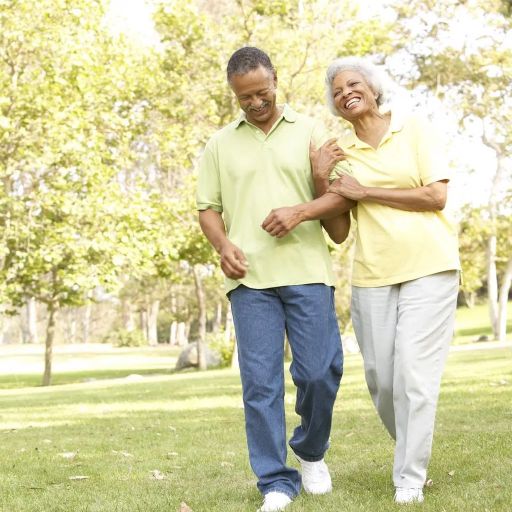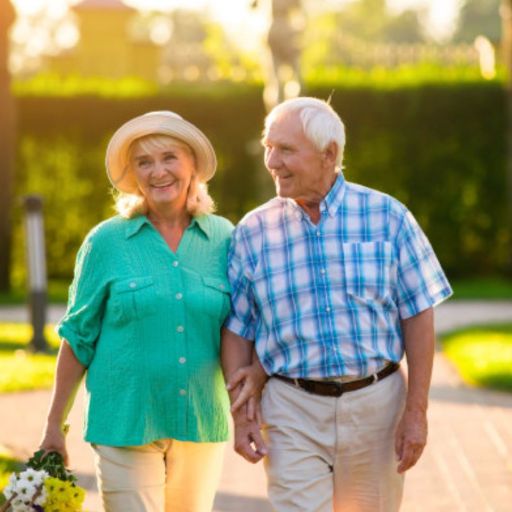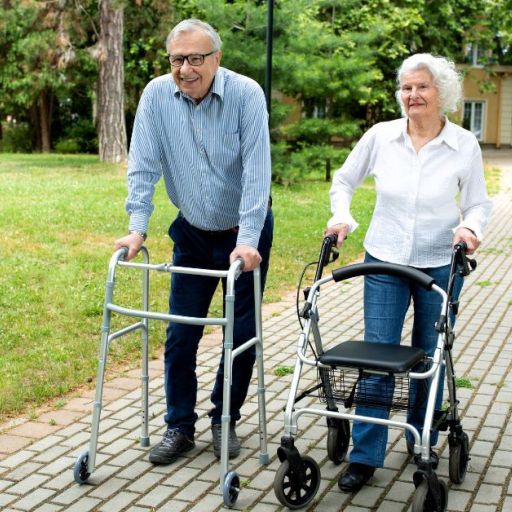During the fall and winter months, when temperatures drop and the air becomes dry, many seniors cut back on outdoor activities to avoid colds or discomfort.
However, walking, as a simple and effective form of exercise, can not only help seniors stay fit, but also boost their immunity and improve their mood.
In this article, we will discuss in detail how older adults can stay healthy by walking in the fall and winter months, and provide some suggestions for safe and effective walking.
Walking is a low-intensity aerobic exercise, and older people are able to adjust the pace and time and make flexible arrangements according to their own physical conditions. For older adults, the health benefits of walking include:
Improved cardiovascular health
During the fall and winter months, cold temperatures may increase vasoconstriction, leading to higher blood pressure and increased risk of cardiovascular disease.
By taking a moderate amount of daily walks, seniors can improve blood circulation, help regulate blood pressure, and reduce the risk of heart disease, atherosclerosis, and other cardiovascular diseases.
Promote Digestion
With age, the function of the digestive system of the elderly gradually weakens, and the dietary structure in the fall and winter seasons is usually based on warm tonic, which increases the burden on the gastrointestinal tract. Walking can help promote gastrointestinal peristalsis, prevent constipation and enhance digestion.
Improve Joint Flexibility
Cold weather may aggravate joint stiffness and pain, especially for older people with arthritis. Through walking, the elderly can gradually increase joint mobility, promote joint lubrication and reduce pain and stiffness.

Strengthening the immune system
During the fall and winter seasons, the incidence of respiratory diseases such as colds and flu is high. Moderate exercise, such as walking, can improve the function of the body's immune system and help the elderly increase their resistance to diseases.
A 30-minute walk every day can effectively boost the activity of immune cells and prevent infections.
Maintain a good mood
With shorter daylight hours and less sunlight in the fall and winter, some older people are prone to seasonal depression. By taking a walk, especially during sunny hours, older people can absorb vitamin D, regulate their mood and reduce depression and anxiety.
Despite the benefits of walking, the cold weather of fall and winter brings some challenges to outdoor activities. Older adults need to take extra precautions when walking to ensure safety.
Wear warm, windproof clothing
Temperatures change a lot during the fall and winter seasons. Older adults should choose windproof and warm clothing, especially hats, gloves and scarves, to avoid exposing their bodies to the cold wind when they go out for a walk.
Multi-layered clothing can be worn to facilitate timely adjustment according to exercise intensity and weather changes.
Pay attention to the slip-resistance of shoes
In fall and winter, the ground may be slippery and icy, increasing the risk of falling. Elderly people should choose shoes with good anti-slip features on the bottom to ensure walking stability. The comfort of the shoes is equally important to avoid foot fatigue and injury caused by long hours of walking.

Reasonable choice of walking time
The temperature is lower in the morning and evening of the fall and winter seasons. Older people should try to avoid going out for a walk during the excessively cold hours, especially those with respiratory diseases or cardiovascular problems.
Midday, when the weather is relatively warm and there is plenty of sun, is the ideal time for walking. In addition, outdoor activities should be reduced in hazy weather so as not to breathe in too much polluted air.
Control walking intensity and time
Elderly people should take walks in the fall and winter seasons for comfort, and should not over-pursuing the amount of exercise.
Generally speaking, a daily walking time of 30 minutes to 1 hour is sufficient to maintain good health. The walking speed can be moderate and does not have to be too fast, but a certain rhythm should be maintained to avoid over-exertion.
Pay attention to the weather forecast and air quality
Older people should pay attention to weather forecasts and air quality reports before going out for a walk in the fall and winter months. On days with poor air quality, it is best to avoid going out or choose to wear a mask.
Outdoor activities are also not advisable during extreme weather such as rain, snow and cold waves, and you can choose to do some gentle stretching exercises at home instead.

Walking is not just a casual walking activity. Elderly people can scientifically plan the route, time and frequency of walking according to their own physical conditions in order to get the best health effect.
Develop a personalized walking plan
Different older people have different physical conditions and health needs, and the walking program should be adjusted according to individual circumstances.
If they suffer from chronic diseases such as hypertension, diabetes or arthritis, they can consult their doctors first to find out the most suitable walking intensity and duration.
Take a step-by-step approach
Elderly people who have just started walking in the fall and winter seasons, especially those who are physically weaker, can start with a shorter period of time and a slower pace, and gradually increase the frequency and intensity of their walks.
Avoid taking long or high-intensity walks all at once to avoid physical discomfort or sports injuries.
Arrange appropriate rest and recovery
After walking in the fall and winter seasons, the elderly should return to a warm environment in time to avoid getting cold outdoors.
Some gentle stretching exercises can be performed to help the body recover, relieve muscle tension and promote blood circulation. At the same time, take appropriate amount of water to avoid dehydration after exercise.
Choose safe walking routes
Ground conditions are more complicated in the fall and winter seasons. Older adults should choose flat, dry walking routes and avoid walking on icy or slippery ground. In addition, try to choose places with less foot traffic and fewer vehicles to ensure that the walking process will not be affected by disturbances or accidents.

Walking is not just a way to promote physical health; it can also be part of a socialization activity for seniors. By walking with family and friends, older people can enhance their emotional connection and share life moments during exercise.
This kind of social interaction can be important for older adults' mental health and emotional management, especially in the fall and winter when outdoor activities are reduced, and it is important to maintain communication with others.
Benefits of Group Walking
Group walks not only add fun to the exercise, but also enable mutual reminders of safety and sharing of health tips. Elderly people can join walking groups in the community or travel with friends and relatives to motivate each other in a relaxed atmosphere and help each other maintain active exercise habits.
Meditation and relaxation on a walk
Walking is more than just a physical exercise; seniors can use the time to meditate or breathe deeply while walking to help relieve stress and anxiety. The fall and winter seasons are rich and colorful in nature, and through contact with nature, older adults are able to relax on a spiritual level and enjoy inner peace.
Walking is a simple but effective way for older adults to stay healthy during the fall and winter months. By reasonably planning the time, place, and intensity of their walks, older adults can not only enhance their physical fitness, but also improve their mood and promote socialization.
Most importantly, safety comes first. Older adults should make reasonable arrangements for their walking program based on their own health and weather conditions. In the cold season, walking is not only exercise, but also a healthy way to return to nature and enjoy life.





